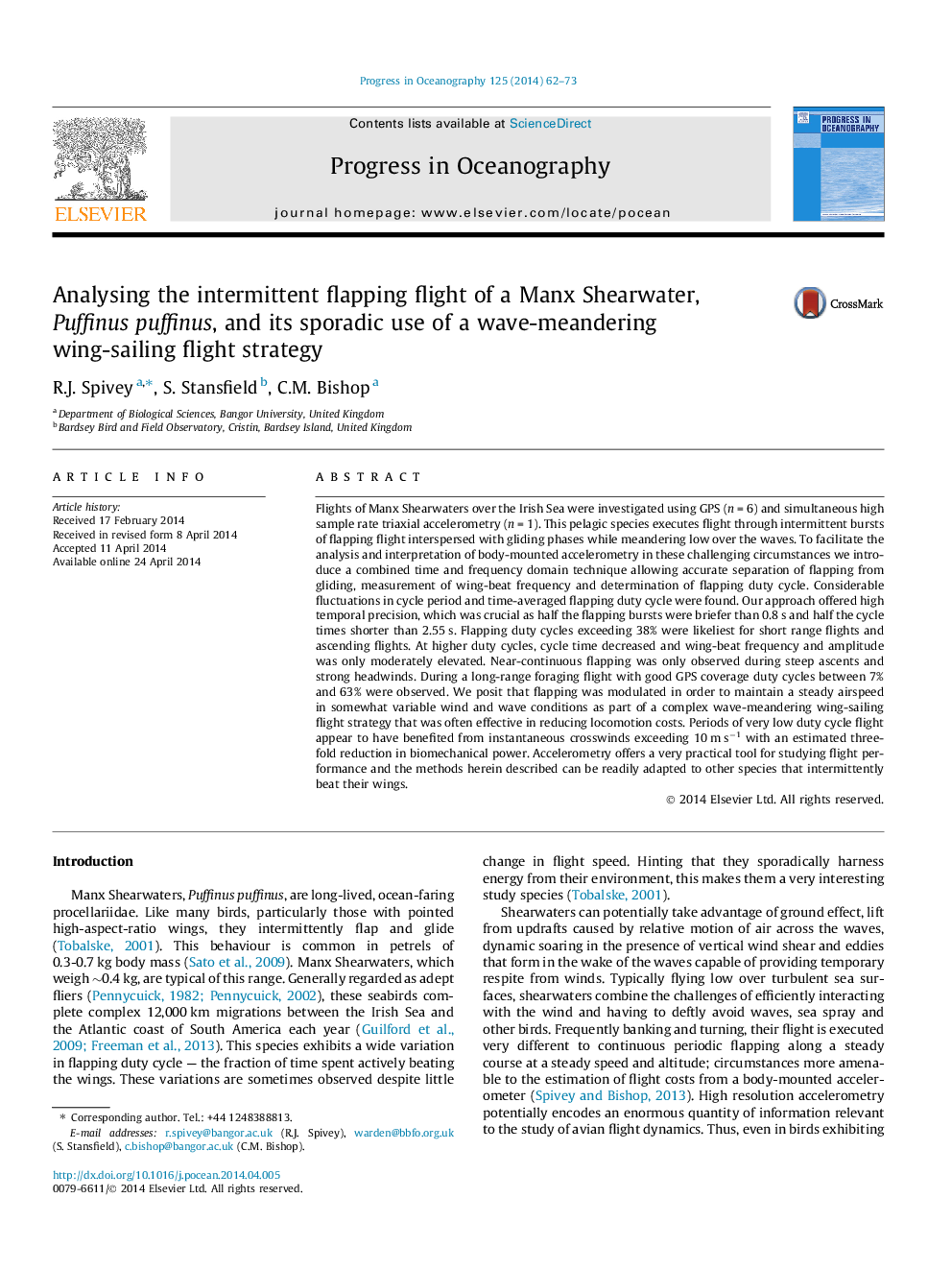| کد مقاله | کد نشریه | سال انتشار | مقاله انگلیسی | نسخه تمام متن |
|---|---|---|---|---|
| 6388648 | 1627930 | 2014 | 12 صفحه PDF | دانلود رایگان |
- Accelerometry captured during flap-gliding flight over the sea is analysed in detail.
- Manx Shearwaters can exploit environmental conditions to reduce flight costs.
- Evidence is uncovered of a wave-meandering wing-sailing flight strategy.
- Manx Shearwaters likely fly perpendicular to the wind during long-range foraging.
- A three-fold variation in duty cycle modulation was observed in windy conditions.
Flights of Manx Shearwaters over the Irish Sea were investigated using GPS (n = 6) and simultaneous high sample rate triaxial accelerometry (n = 1). This pelagic species executes flight through intermittent bursts of flapping flight interspersed with gliding phases while meandering low over the waves. To facilitate the analysis and interpretation of body-mounted accelerometry in these challenging circumstances we introduce a combined time and frequency domain technique allowing accurate separation of flapping from gliding, measurement of wing-beat frequency and determination of flapping duty cycle. Considerable fluctuations in cycle period and time-averaged flapping duty cycle were found. Our approach offered high temporal precision, which was crucial as half the flapping bursts were briefer than 0.8 s and half the cycle times shorter than 2.55 s. Flapping duty cycles exceeding 38% were likeliest for short range flights and ascending flights. At higher duty cycles, cycle time decreased and wing-beat frequency and amplitude was only moderately elevated. Near-continuous flapping was only observed during steep ascents and strong headwinds. During a long-range foraging flight with good GPS coverage duty cycles between 7% and 63% were observed. We posit that flapping was modulated in order to maintain a steady airspeed in somewhat variable wind and wave conditions as part of a complex wave-meandering wing-sailing flight strategy that was often effective in reducing locomotion costs. Periods of very low duty cycle flight appear to have benefited from instantaneous crosswinds exceeding 10 m sâ1 with an estimated three-fold reduction in biomechanical power. Accelerometry offers a very practical tool for studying flight performance and the methods herein described can be readily adapted to other species that intermittently beat their wings.
Journal: Progress in Oceanography - Volume 125, June 2014, Pages 62-73
